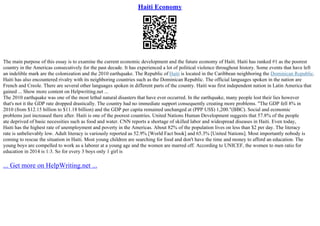Voodoo Economics, also known as Supply-Side Economics, is a controversial economic theory that gained prominence during the 1980s. Coined by critics, the term “Voodoo Economics” suggests that the theory is fundamentally flawed and relies on unrealistic assumptions. In this article, we will delve into the principles behind Voodoo Economics and examine its impact on the economy.

Credit: www.slideshare.net
Table of Contents
The Basics of Voodoo Economics
At its core, Voodoo Economics advocates for policies that focus on tax cuts with the belief that these reductions will stimulate economic growth. The theory argues that by reducing tax levels, individuals and businesses will have more disposable income, which in turn will encourage spending and investment. This, in theory, should lead to economic expansion, job creation, and increased government revenue.
Proponents of Voodoo Economics argue that by reducing taxes, the incentives for businesses and individuals to work, save, and invest increase. They claim that this leads to a virtuous cycle where higher economic activity offsets the initial loss of tax revenue, ultimately resulting in higher tax revenue in the long run.
The Laffer Curve
One of the central pillars of Voodoo Economics is the Laffer Curve, a graphical representation of the relationship between tax rates and tax revenue. The curve suggests that at some point, a tax rate becomes so high that it discourages economic activity and actually reduces tax revenue. Conversely, cutting tax rates below this point is believed to stimulate economic growth and increase revenue.
However, critics argue that the Laffer Curve oversimplifies the complex relationship between tax rates and revenue. They contend that it is not a reliable indicator of the exact point at which tax cuts will lead to increased revenue. Furthermore, opponents of Voodoo Economics argue that tax cuts mainly benefit the wealthy, exacerbating income inequality.
Controversies and Criticisms
Voodoo Economics has attracted both proponents and critics since its inception. Critics argue that the theory lacks a strong empirical basis and that historical evidence does not support the hypothesis that tax cuts lead to significant economic growth. They claim that while tax cuts may contribute to short-term stimulus, the long-term effects on the economy are limited.
Furthermore, opponents argue that tax cuts can lead to a decrease in government revenue, potentially resulting in budget deficits and increased national debt. They assert that this can lead to adverse consequences for the economy in the long run.
The Legacy of Voodoo Economics
Despite the criticisms, Voodoo Economics has had a lasting impact on economic policy. It played a prominent role in shaping the economic policies of the Reagan administration in the United States. Reagan implemented significant tax cuts under the belief that they would stimulate economic growth and foster prosperity.
Since then, various countries have adopted similar supply-side economic policies, with some experiencing varying degrees of success. However, the ongoing debates continue as to whether the outcomes are a result of the policies themselves or other external factors.
Credit: www.c-span.org
In Conclusion
Voodoo Economics, or Supply-Side Economics, remains a highly debated theory in the field of economics. While proponents argue that tax cuts can unleash economic growth, critics often challenge the assumptions and efficacy of such policies. Understanding the principles and controversies surrounding Voodoo Economics is crucial in comprehending the ongoing debates about economic policy.